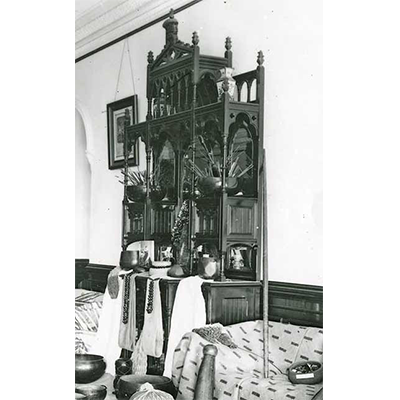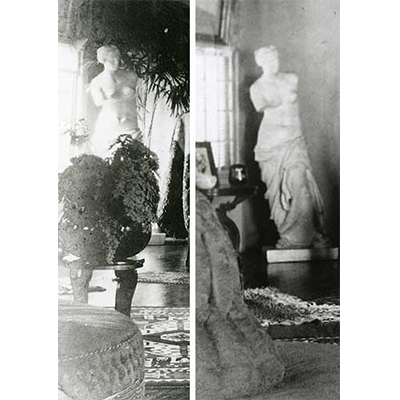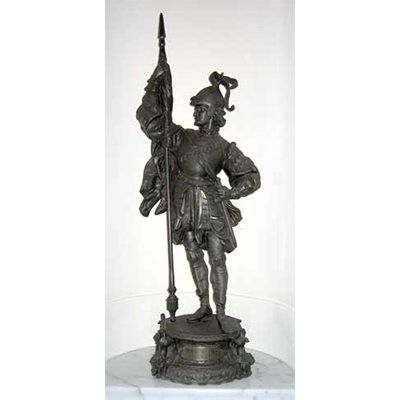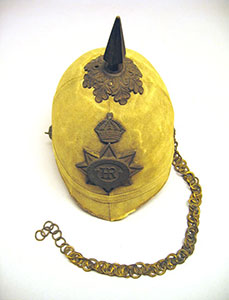Most Wanted Items
“Most Wanted” List
After King Kalākaua's death, the death of Queen Liliʻuokalani, and the overthrow of the Hawaiian monarchy, much of the Palace contents were sold at public auction. As part of our mission to preserve, restore, and share the stories of this wahi pana, The Friends of ʻIolani Palace continues to search for original Palace and monarchy furnishings and treasures,
Some of the largest pieces of furniture are still missing. If you think you may have original furniture, or other objects from the Palace collections, please contact our collections department.
Historic photos are from the Hawaiʻi State Archives.
Collection Items




Historic Photos
Monarchy era photos of Palace rooms, people, and events provide valuable information about original Palace furnishings. The Palace curator's office references many such photos to identify original palace objects or items having a royal connection. If you have a photo that may help with this research, please contact the Curator.
Historic photos may help you identify or begin to ask questions about objects that you have or know about.

Furniture from the Davenport Order
225 pieces of furniture were ordered from A.H. Davenport Co. of Boston during construction of the new Palace. The four bedrooms on the second floor were each decorated with similar pieces of furniture, in different woods and upholstery fabrics. The King’s Bedroom was decorated in light blue with ebony and gilt furniture. The Queen’s Bedroom furniture was in red with furniture of mahogany and gilt. Furnishings for the other bedrooms were made of walnut (central bedroom) and cherry (front bedroom), having drapery and upholstery fabric in lemon yellow and olive green respectively.
The following items are on the "most wanted" list:
- Kalākaua's bedroom suite, which was gilded and made of ebonized wood
- Bedroom side chairs (9 missing)
- Bedroom square and round chairs (2 missing)
- Dressers (2 missing)
- Wardrobes (3 missing)

Paper Collection
The Royal Chamberlain issued many invitations, menus, dance cards, place cards, and other works on paper for Palace events. Existing items in the collection show marks and patterns that can be used to identify additional items.
View The Palace Works On Paper Collection

Military Accessories
When Kalākaua became King, one of his first acts was to reestablish the Hawaiian military, including the Royal Guard and several other companies. Many military items, such as uniforms, hats, swords, patches, buttons, and other accessories from the Guard and other companies are still in private hands.
